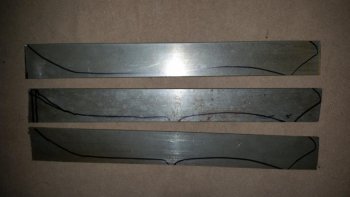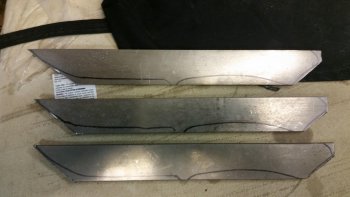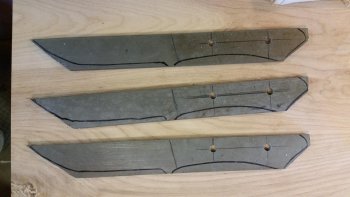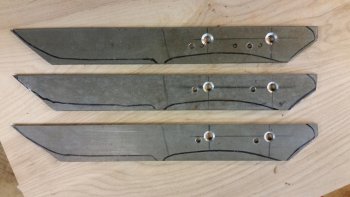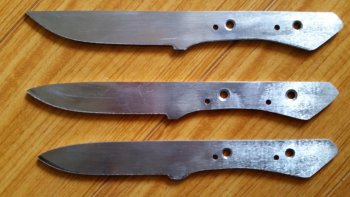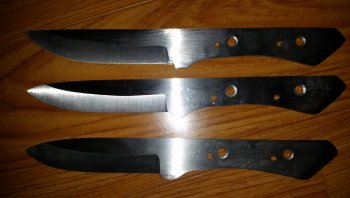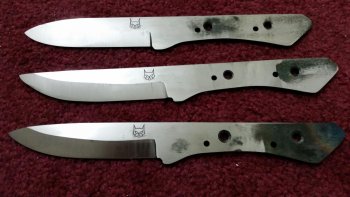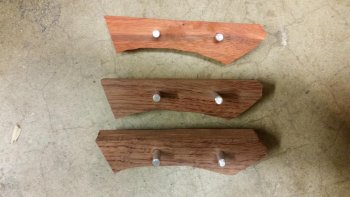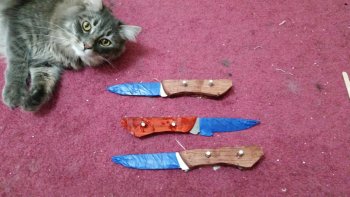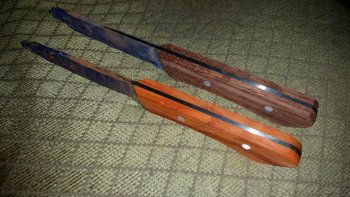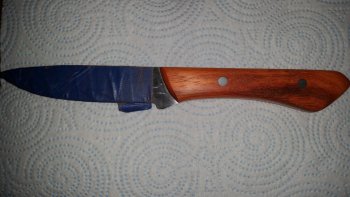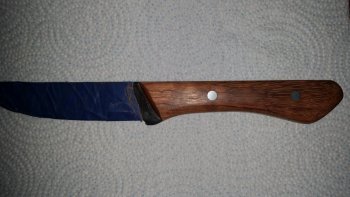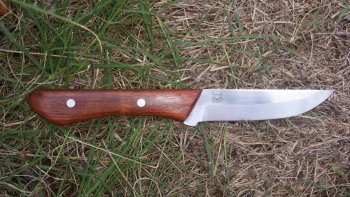
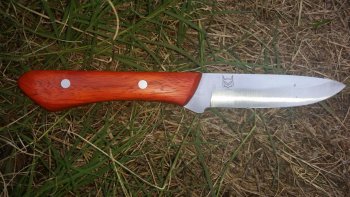
I'm new to the forum and new to knife making. I'm not very good yet, the finish on my blades leaves a lot to be desired. But I enjoy making them.
These two I made from 1084 steel, ground them as best I could, heated them up until a magnet wouldn't stick, then stuck them in canola oil. Seemed to get them really hard. Put them in a kitchen oven at 425 for an hour three times, then put the handles on.
Though these in no way compare to the knives I see on this forum, I hope to get there someday. Hope I'm on the right track.
Joe

